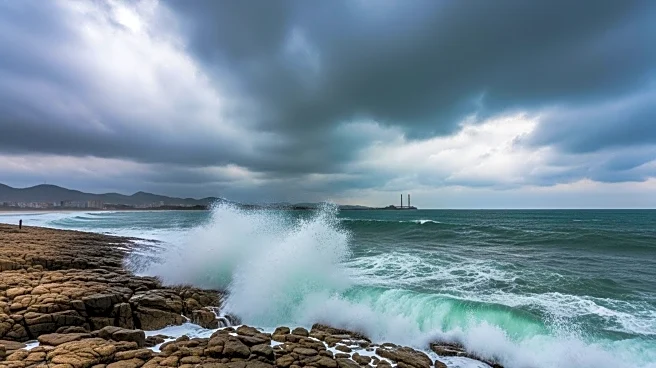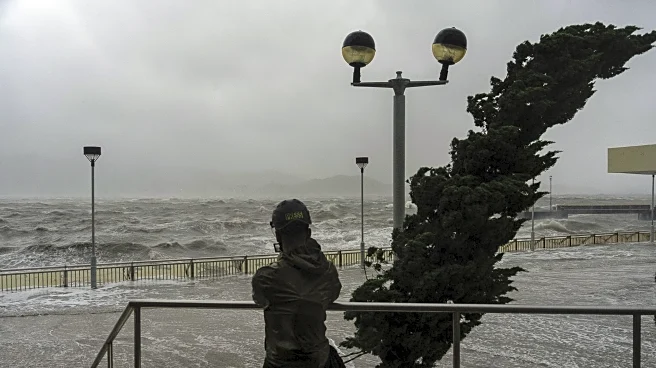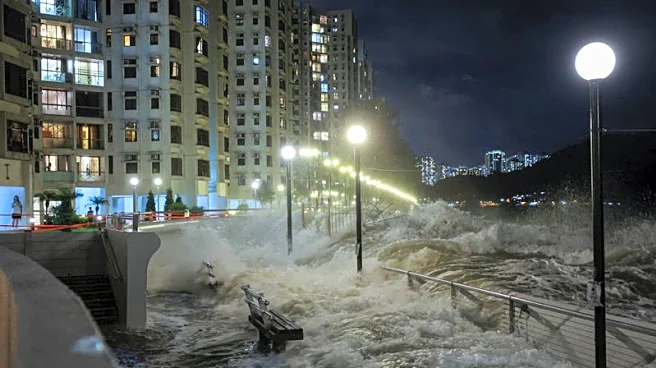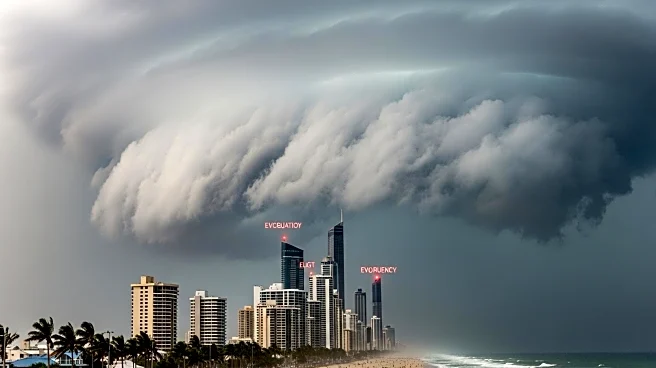What's Happening?
Typhoon Ragasa, one of the strongest storms of the year, has caused significant destruction in Taiwan and the Philippines before reaching southern China. In Taiwan, 17 people died due to flooding in Hualien County, while the Philippines reported three deaths and thousands displaced. Ragasa made landfall in China's Guangdong province, bringing heavy rain and winds up to 112 mph. The storm has disrupted life in Hong Kong and Macau, with schools and flights canceled and businesses closed. Residents have been advised to avoid shorelines and low-lying areas due to storm surges.
Why It's Important?
The impact of Typhoon Ragasa highlights the vulnerability of coastal regions to extreme weather events. The storm's path through densely populated areas poses significant risks to infrastructure and public safety. The economic implications are considerable, with potential losses comparable to previous typhoons that caused hundreds of millions in damages. The situation underscores the importance of disaster preparedness and climate resilience in mitigating the effects of such natural disasters.
What's Next?
As Ragasa continues its trajectory, authorities in affected regions are focused on evacuation and relief efforts. The storm's weakening is anticipated, but vigilance remains crucial as it moves towards Vietnam. The international community may need to provide support for recovery and rebuilding efforts. Discussions on climate adaptation and infrastructure resilience are likely to gain momentum in the wake of the storm's impact.
Beyond the Headlines
The occurrence of such powerful storms raises questions about the long-term effects of climate change on weather patterns. The need for sustainable development and investment in climate-resilient infrastructure is becoming increasingly urgent. The storm's impact on agriculture and local economies may have lasting effects, prompting a reevaluation of regional and global strategies for climate adaptation.












